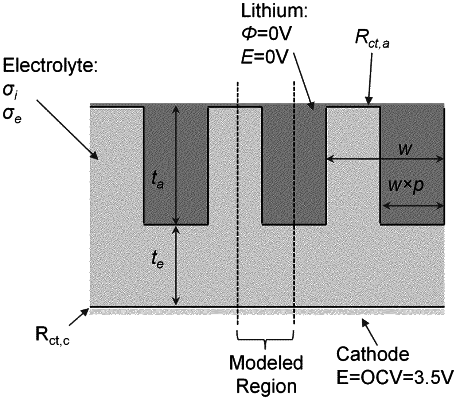| CPC C01G 25/006 (2013.01) [H01M 10/0562 (2013.01); C01P 2002/30 (2013.01); C01P 2002/54 (2013.01); C01P 2002/76 (2013.01); C01P 2004/03 (2013.01); C01P 2006/16 (2013.01); C01P 2006/40 (2013.01); H01M 2300/0077 (2013.01)] | 13 Claims |

|
1. A method of making a sintered LLZO ribbon, the method comprising:
sintering a tape cast slip composition at a temperature of greater than or equal to 600° C. to produce the sintered LLZO ribbon, the tape cast slip composition comprising:
Li2CO3,
a lanthanum compound,
ZrO2, and
at least one of the group consisting of: a dispersant, solvent, plasticizer, binder, and defoamer,
wherein the tape cast slip composition comprises substantially no pore forming agent,
wherein the sintered LLZO ribbon comprises an open-pore lithium-ion conducting ceramic layer comprising:
a porosity of from greater than or equal to 50% to less than or equal to 90%,
a d90 pore size of less than or equal to 10 μm, and
the thickness of the open-pore lithium-ion conducting ceramic layer is from greater than or equal to half the d90 pore size and less than or equal to 70 μm.
|